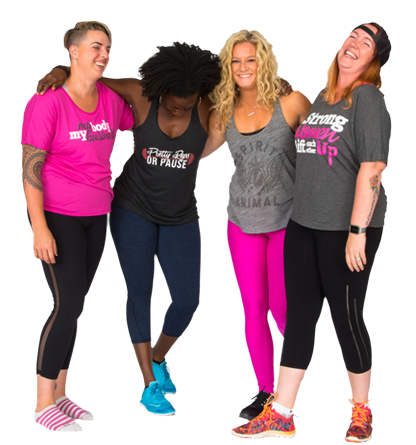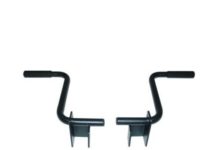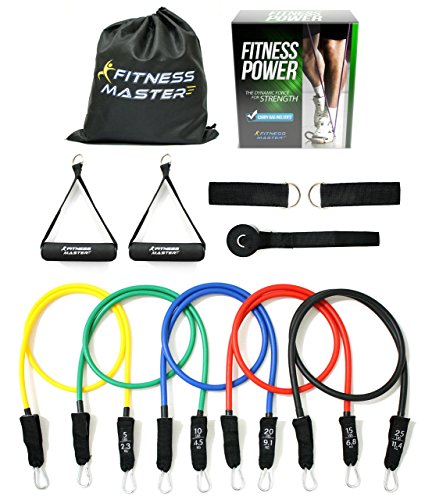Whether your training goal is performance enhancement, fat loss, or simply feeling good while maintaining an injury-free lifestyle, there is one concept that is almost universally agreed upon amongst the experts. In order to achieve the best possible outcome, you will need to address your glutes in an intelligently programmed and strategically executed manner.
A “well-rounded” glute program (pun definitely intended) takes into account both the structure and function of the lumbo-pelvic-hip complex.
Register for the Women’s Strength and Empowerment Weekend!
Spots are going fast, and it always sells out!
The gluteals (glute minimus, maximus, and medius) are in charge of multiple movements at the hip, primarily hip extension, but also abduction, external rotation, and stabilization of the entire posterior chain. Since they function synergistically with the core and muscles of the upper and lower extremities, the glutes are often the cornerstone of most compound movement patterns.
Avoid This Misconception
A common misconception is that if a “flare up” (increased burning or muscular fatigue) is felt in the lower back during a glute or leg exercise, this is an indication that the back is “weak.” More often than not, the cause of the problem is not weakness, but a result of either inefficient glute activation, incorrect execution of the movement pattern, or at worst, the presence of some other pathology.
The body is exceptionally efficient. When we cannot get in touch with the glutes as well as we would like, the body will “steal” the work from the closest available muscle group. The common culprits in this case are typically the hamstrings or the muscles of the lower back, thus giving us the often misunderstood “flare up.”
What It’s All About
Appropriate and transferable strength together with proper function of the glutes, plays a pivotal role in the rate of success of your overall training program, as well as in the long term health of your spine.
OK! So we should just pop into the gym and start training the glutes, right?
Not so fast!
While traditional glute-dominant exercises like the deadlift and squat are superior loaded glute exercises, sufficient activation and recruitment of those muscle fibers is not automatic, or guaranteed, for everyone. An extra intervention is often necessary in order to get the glutes and the brain “talking to one another.”
Factors That Can Hinder Glute Activation
- Sitting all day
- Presence of acute pain, or history of lower back or lower extremity injury
- Lack of general kinesthetic awareness of how to control the desired movement pattern safely and effectively
If you fall into any of the above categories, you will most likely need to spend some time during your dynamic warm-up doing glute activation and integration in order to be ready to perform in the most optimal and pain-free manner.
As the old adage goes, “You can’t build the arse of your dreams by sitting on it.” Or wait, maybe that’s just a meme that’s been floating around. Either way, the advice is sound, and I stand by it.
The Promise
Spending time strategically activating your rear will decrease the likelihood of compensation from the lower back or hamstrings. It will also reinforce safe and efficient movement patterns and increase the likelihood of attaining and maintaining a healthy lower back.
Finally, the big pay-off you’ve been waiting for: all of this work will translate to the ability to lift progressively heavier (and pain-free) loads, which leads to greater overall performance, and therefore greater results. That’s a win-win-win!
A quick disclaimer: While the exercises I am about to introduce are designed to be lower-back friendly based on their order and execution, please always listen to your body. We all come to the table with unique anatomy, ability, and history.
The truth is, when it comes to training the glutes, there is no “one best” exercise; so don’t believe the hype!
As a rule of thumb, if the exercise you are attempting is activating your lower back, even after following all directions and meticulously adjusting your form, it is a good idea to regress that movement, try a different exercise altogether, or seek out the help of a knowledgeable pro.
Never “power through” lower back pain. Life is too short, and you’ve got a lot of training left to do!
Now that we’ve gotten that out of the way, let’s get to the good stuff.
7 Best Lower-Back-Friendly Glute Exercises
Approach this a two-step system. Start with preparation and activation, followed by integration and strengthening.
Step I: Preparation & Activation
The goals of the exercises in this step are to fill the tissues with blood, enhance the neuromuscular connection (increased nerve signaling), to dynamically prepare and perfect proper movement patterns, and to gain the ability to consciously engage the glutes “on command.”
Add the following three exercises to your dynamic warm-up sequence. Two to three sets of each is sufficient. Keep the rep ranges relatively low between four and 10, or until you feel a reasonable amount of “burn” or feel awareness of the muscle.
1. Single-Leg Stance + Dynamic Kettlebell Presses
This dynamic stabilization exercise is a great place to begin in your glute activation series because it provides immediate feedback via the constant isometric hold of the glute complex.
The goal of this exercise is to stay balanced on one leg, while maintaining a level pelvis, and avoiding excessive foot pronation (when the foot rolls inward, flattening the arch) or a valgus knee collapse (when the knee caves inward). The dynamic action with the kettlebell varies the input to the system, forcing stabilization in order to prevent the trunk and lower extremities from losing the alignment of single leg stance.
Key Coaching Points:
- Perform barefoot to increase awakening of the nervous system and activation of the entire kinetic chain.
- Set up in a single-leg stance position: knee slightly bent, hip slightly hinged, pelvis and lumbar spine neutral, rib cage tucked down towards pelvis.
- Engage the glutes throughout the exercise.
- Press the kettlebell in four different patterns: straight out from chest, diagonally up to the right, diagonally up to the left, and overhead. Vary the order as you go.
Progression: Add a mini-band just above the knees
- Maintain the same form as above
- The added band will further trigger hip stabilization by forcing a resisted force to external rotation and abduction of the hip.
2. Miniband 3-Way Glute Taps
The standing leg is the focus in this exercise. The taps out to the side with the contralateral leg introduce multi-directional, dynamic perturbations to the system that force the core and standing hip to stabilize against the various movements. An intense glute activation will occur as tension builds, effectively priming the core and lower extremities for the workout that is to come.
Key Coaching Points:
- Load up the glute initially by dropping down into a semi squat position – hinging at the hip, trunk angled slightly forward.
- Maintain your center of mass over the fixed leg throughout the sequence.
- With the contralateral foot, tap laterally, diagonally, directly behind, and behind and across the body.
- The tapping pressure should be very light; Imagine that you are tapping very thin ice
- The distance that you tap is dictated by your ability to maintain the aligned, stable form. Remember, you must earn the right to progress!
- Maintain a level pelvis and centrally aligned trunk with each tap.
- Avoid a trunk lean, valgus knee collapse, and excessive pronation.
A Progression of this exercise (not shown in the video): Add a single-leg squat
- Instead of the standing leg just staying fixed at one degree of hip flexion, when applicable, consider adding a single-leg squat to the step-out.
- As the contralateral foot taps out, the standing leg descends down into the squat.
- As the foot drives back in, concentrically return up from the squat.
- All of the previous cues on form and alignment apply to this progression.
3. The Frog-Leg Bridge
With this glute bridge variation, you get the benefit of hip extension as well as a resisted abduction and external rotation due to the mini band and hips positioned a wide, abducted stance.
- Brace the core by dropping the rib cage down towards the pelvis, tucking the pelvis up slightly towards the ribs.
- Upon a strong exhale, contract the glutes to drive the hips off the ground to near end-range hip extension.
- Stability in the lumbar spine and pelvis must be maintained throughout in order to avoid extending through the lumbar spine instead of just the hip
- Pause at the top for an isometric hold for two seconds before descending back to the ground
- If you find it difficult to access the glutes initially, I recommend spending more time in the iso-hold at the top of the motion. This often aids in “accessing” what the contraction should feel like.
Step II: Integration & Strength
Once you have sufficiently activated the gluteal complex in multiple planes, you are now set up to reap the benefits of the following strengthening exercises in a spine-friendly manner!
The following four exercises are global movement patterns and compound exercises that are traditionally known to deliver great strength, metabolic conditioning, and functionally transferable results!
Choose the set and rep ranges based on your personal goals.
1. Forward-Leaning Lunge
Key Coaching Points:
- Throughout this exercise, create and maintain high-tension stiffness in the trunk by bracing the core and aligning a “tucked” rib cage over a neutral pelvis.
- Load up the glute by hinge from the hip and angling the trunk forward, about 15 to 20 degrees.
- When dropping into the lunge, stop at the depth that allows you to control and maintain a neutral and aligned trunk.
- Pause at least two seconds in the the fully loaded eccentric position before returning back to the start.
- Avoid segmental trunk motion or rounding of the upper back throughout the concentric phase. This will often trigger the lower back to kick in.
2. Elevated Reverse Lunge
Key Coaching Points:
- Before stepping back, start with an engaged and stabilized hip by assuming the single-leg stance position.
- Drop down into the lunge while keeping the emphasis on the eccentric lowering of front leg.
- Avoid valgus or varus (inward or outward) knee collapse.
- Plant the back foot and pause for two seconds so the magic of the stability, flexibility, and isometric strengthening of this position can set in!
- Attempt to drive back up to the top of the step into the single-leg stance position
3. Laterally Loaded Single-Leg Deadlift
Instead of loading the deadlift anteriorly with dumbbells, barbells, or kettlebells, place the direction of pull of resistance laterally using a cable or band. The lateral loading in this unilateral hinge pattern requires the upper body, core and hip musculature to work synergistically to deliver anti-rotational control at the hip, while performing the deadlift action in the sagittal plane.
Key Coaching Points:
- Before hinging back, begin with an engaged and stabilized hip by assuming the single-leg stance position.
- Hold the handle at your stomach throughout.
- Control for excessive foot pronation, trunk “spin out”, and valgus knee collapse
- Half way through the set, face the opposite direction in order to change the direction from which the force is coming.
4. Miniband Squat + Lateral Lunge Combo
As you travel through two different planes of motion with the squat and lateral lunge, the addition of the miniband gives the added benefit of increased activation of hip external rotation and abduction.
Key Coaching Points:
- Throughout the squat, avoid letting the band pull the knees into the valgus position.
- Maintain a neutral pelvis and lumbar spine position throughout.
- Pause to reset the form as you transition from one exercise to the other.
Save $200! Early bird price for the Women’s Strength & Empowerment Weekend ends soon!
The Women’s Strength and Empowerment Weekend, powered by Girls Gone Strong, was designed to create a space for women to rise, teach, lead, learn, and connect with one another. Throughout the weekend you’ll hear from some of the most well-respected women in the world from every facet of the health and wellness industry, from PhDs to Registered Dietitians to top CrossFit athletes, and pre and postnatal fitness and body autonomy experts.

You’ll be surrounded by a group of like-minded, strong women who are there to lift each other up, and help each other become the best version of themselves in a warm, welcoming, and inclusive environment.
You will leave the weekend feeling heard, loved, supported, and empowered and most importantly knowing that you have finally found your tribe.
Last year we sold out in just 26 hours, so if you’re interested in attending, click the button below.
The post 7 Low-Back-Friendly Glute Exercises appeared first on Girls Gone Strong.






